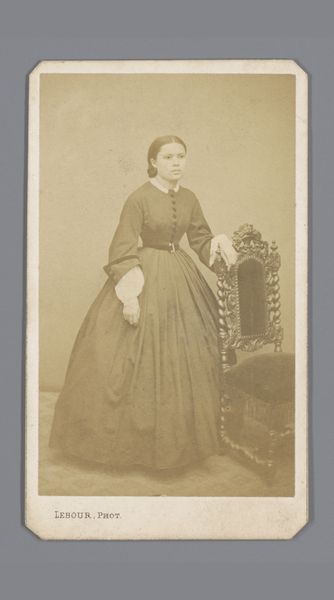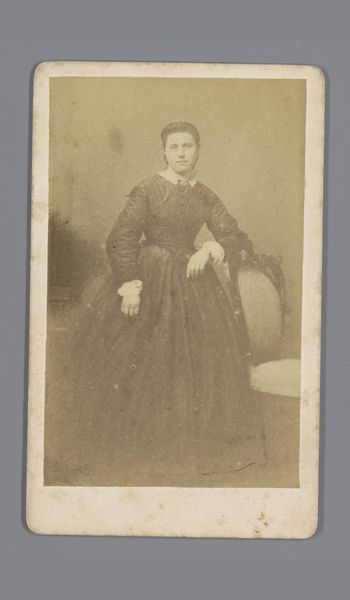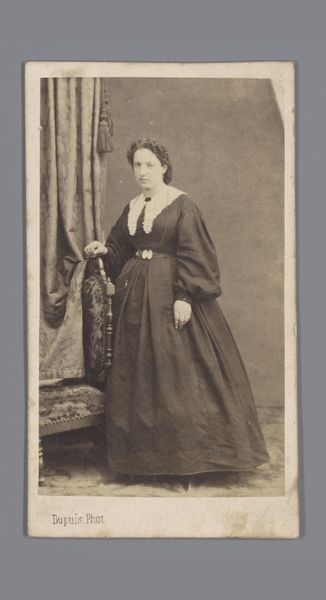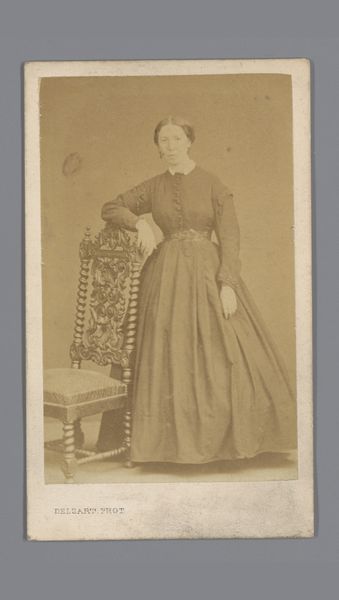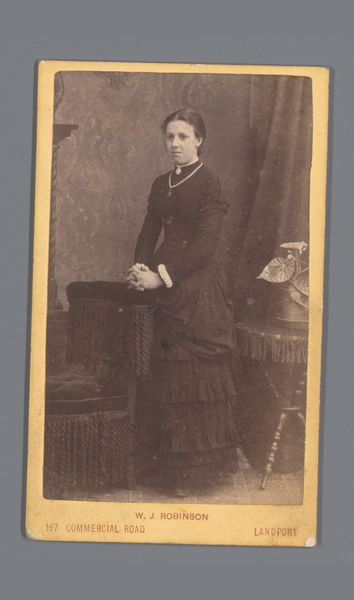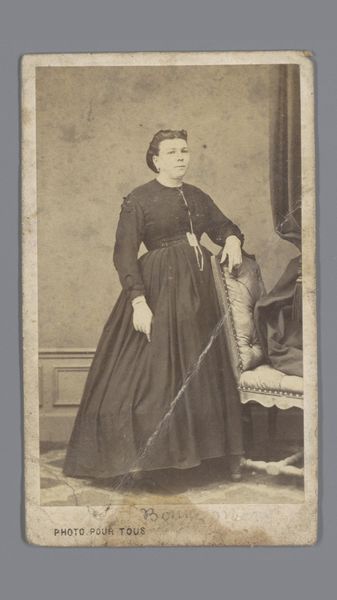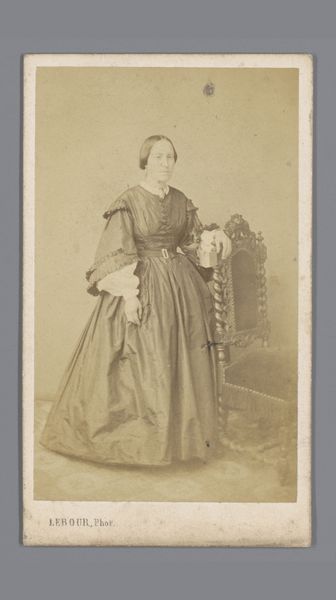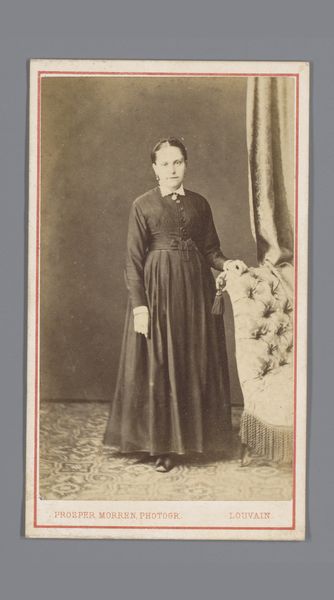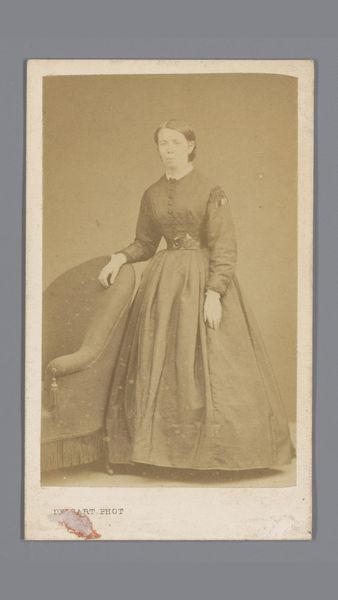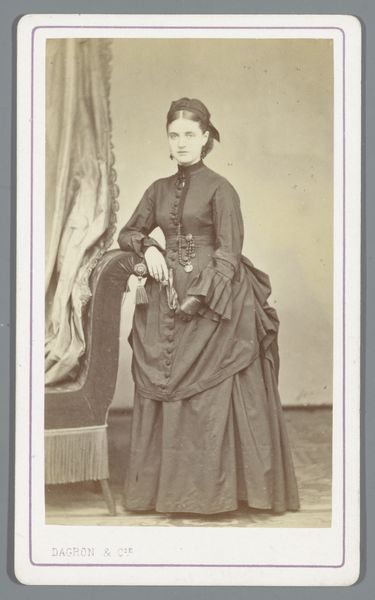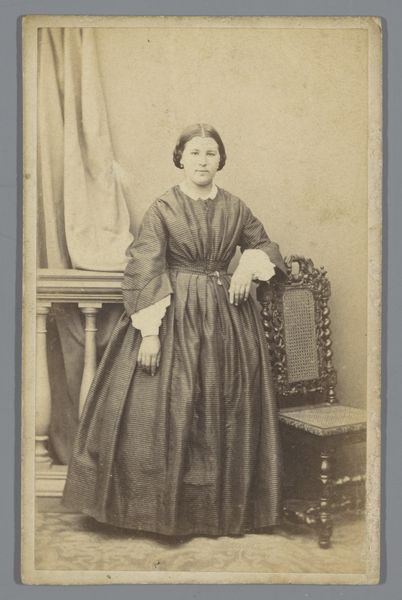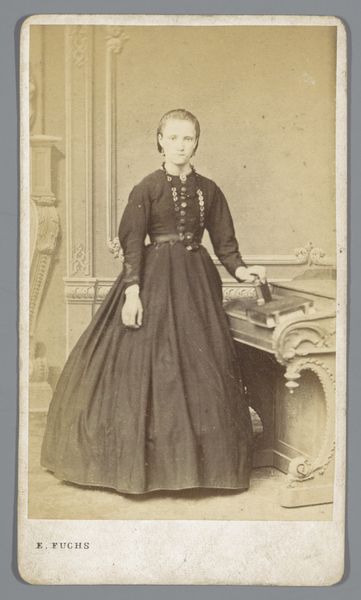
Dimensions: height 103 mm, width 60 mm
Copyright: Rijks Museum: Open Domain
Curator: Looking at this piece by Dupuis, titled "Portret van een onbekende vrouw bij een stoel," dated sometime between 1855 and 1885, made using the gelatin silver print technique, I can't help but wonder about the context of photographic portraiture in the mid-19th century. Editor: It’s melancholy, isn't it? The woman's somber expression combined with the sepia tones gives it a very serious, almost mournful feel. It makes me question the subject's personal agency and societal expectations. Curator: That seriousness was somewhat cultivated. Portrait studios, gaining popularity then, represented more than just a likeness. They became arenas for social performance. The subjects, very often from a bourgeois background, chose to perform the expected etiquette. The presence of a studio prop—the chair, in this instance—reinforces the sense of staged elegance. Editor: The very limited color palette certainly enforces an understated appearance, but what narratives are actually present? Were women in similar situations presented as actively resisting, subverting, or playing into what they felt was asked of them by patriarchal institutions? The details in the photograph's romanticist presentation are almost cliché, when looking at them with contemporary eyes. Curator: It's worth mentioning the democratizing influence of photography during this period. Suddenly, portraiture wasn't exclusively for the elite; it allowed for a wider segment of the population to participate in the visual representation of themselves and their families. These "genre paintings" in photography provided avenues of socio-economic representation like never before. Editor: That's an important consideration. Still, the stiffness of the pose and the implied wealth in her garments spark my curiosity. Did she have control over her representation, or was it largely dictated by the photographer and the prevailing social norms? Looking into it deeper, can we consider ways she might have re-appropriated certain visual codes, thus subverting patriarchal norms from within the studio's structure? Curator: Thinking about the role museums play, pieces like this are powerful reminders that museums, or even photographs from that time, are inherently ideological projects, showcasing very carefully planned ideas about how a museum visitor or audience is meant to see the world. Editor: Definitely. I think reflecting on how we perceive images like this, what histories and power structures they evoke, encourages a crucial level of historical and political accountability.
Comments
No comments
Be the first to comment and join the conversation on the ultimate creative platform.
